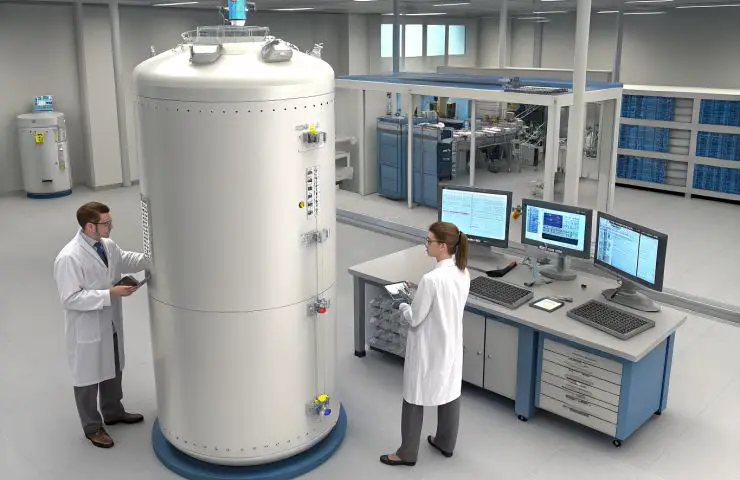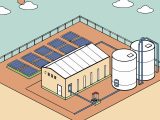
Hydrogen storage: TU Delft’s Falsetti Secures Vidi Grant for Sustainable Aviation
October 30, 2025On October 2025, TU Delft dropped some seriously exciting news: Dr. Chiara Falsetti—an assistant professor who lives and breathes heat transfer and thermal management—just landed a €850,000 Vidi grant to shake up hydrogen storage for sustainable aviation. Think about it: commercial airliners have sputtered along on kerosene since Lindbergh’s day, but swapping out jet fuel for cryogenic hydrogen means overthrowing decades of engineering norms—tank shapes, insulation tricks, chillers that keep hydrogen at a frosty –253°C, and the fine-tuned flow control needed at cruising altitude. Falsetti’s no stranger to big challenges, bringing insights from EPFL, Nokia Bell Labs and Oxford’s Thermofluids Institute to the table. It’s a milestone that’s already causing a buzz in Europe’s aerospace circles—one that might rewrite the rulebook on zero-carbon flight.
Strategic Angle
Right now, aviation chalks up almost 3% of global CO2 emissions—and without a shake-up, that number’s headed north. Enter green hydrogen, which, when produced by renewable-powered electrolysis, burns clean (no CO2 in use). The snag? Keeping it chilled at –253°C under pressure is like trying to hold onto ice cubes in a blast furnace—boil-off rates creep above 2% per day, and safety protocols get hairy. Falsetti’s research aims to flip the script: advanced insulation, active cooling loops and smart control systems designed to slash boil-off to below 1%, cutting chuck-outs in half.
For airlines and lessors, the upside is huge: lighter, sleeker tanks, lower ground-handling costs and fuel budgets that don’t swing wildly. Knock 15% off tank weight and boost usable hydrogen by 20%, and you’re looking at tens of millions saved per aircraft over its service life—bridging the gap with classic jet fuel on the bottom line.
This project rides shotgun with big-ticket EU programmes—Clean Aviation Joint Undertaking and IPCEI Hy2Tech—which together funnel over €20 billion into industrial decarbonization and sustainable energy by 2030. Falsetti’s Vidi-funded work ties lab-grade science straight into real-world deployment, making it a cornerstone of Europe’s zero-emission technology push.
Technical Snapshot
The Vidi grant sets the stage for tackling three core challenges:
- Boiling heat transfer: High-fidelity mapping of heat fluxes at cryogenic temperatures to model and minimize evaporative losses during take-off, cruise and landing cycles.
- Phase-change dynamics: Adapting high-speed sensors and imaging from microelectronics evaporative cooling to peek inside two-phase hydrogen flow in pipes, valves and manifolds in real time.
- Cryogenic storage architectures: Engineering next-gen composite insulation—think aerogel-infused multilayers paired with modular cooling loops—that integrates seamlessly with existing aircraft structures and refueling interfaces.
On top of that, the team leans into advanced computational fluid dynamics (CFD) and digital twin platforms to simulate two-phase behavior virtually, tweaking designs before cutting any metal. TU Delft’s numbers suggest this digital-first approach chops nearly 30% off hardware development cycles and budget overruns. Their lab prototypes have already posted a 30% jump in thermal resistance thanks to novel sandwich composites. Coming up: a 200-liter demo tank built with Rolls-Royce and ESA, eyeing pilot-scale tests by mid-2026 to validate the tech under real-world conditions—and thanks to digital twinning, they can spin through dozens of design iterations overnight, slashing trial-and-error cycles.
Key Takeaways
- Enhanced efficiency: Targeting a 20–30% cut in daily boil-off could deliver a 15–25% drop in total cost of ownership for hydrogen-powered fleets.
- Infrastructure synergy: Partnerships with Amsterdam and Rotterdam airports to craft end-to-end storage-to-tank solutions, potentially trimming refueling station CAPEX by 20%.
- Regulatory impact: Experimental data feeding into ICAO and EU safety standards will influence certifications, crew training protocols and airport operating procedures.
- Cross-sector benefits: Innovations in composite insulation and two-phase diagnostics could spin off into LNG terminals, nuclear cooling systems and high-power electronics—supercharging industrial decarbonization.
- Workforce development: Engaging over 20 PhD candidates and post-docs in training programs will build a skilled talent pipeline for the zero-emission technology arena.
Bonus point: the project’s sensor and materials breakthroughs could spawn new startups, further bolstering Europe’s role in sustainable energy and cryogenic tech sectors.
Parallel Moves
Meanwhile, across Europe, carriers like Lufthansa in Germany and Air France in France are kicking off hydrogen production and refueling pilots—though most efforts focus upstream on electrolysis and supply chains. That leaves a critical hole at the storage and delivery end. Falsetti’s work is poised to fill that gap, ensuring liquid hydrogen arrivals are chilled, contained and flight-ready for genuine zero-emission technology operations.
Plus, early-stage hydrogen corridor projects in Scandinavia and the Alpine region are laying the groundwork for transnational refueling routes—setting the stage for long-haul flights powered by green hydrogen.
Ecosystem & Collateral Impact
This research isn’t just aviation’s next big thing. The advances in insulation materials and diagnostic sensors could reshape cryogenic hydrogen handling for shipping, heavy industry and LNG terminals—supercharging broader sustainable energy agendas. Nestled in South Holland, TU Delft taps into a rich cluster of aerospace leaders, cryogenics experts, port operators and agile SMEs, creating a 360° innovation ecosystem that fast-tracks lab-to-hangar transitions.
On the policy front, the team’s findings will feed into upcoming EU funding calls, safety frameworks and vocational training programs. Expect early revisions to airport fire codes, fresh incentives for hydrogen corridors and a blueprint for public-private partnerships that regions worldwide may copy.
Regional test facilities and specialized cryogenics workshops mean prototypes can move from drawing boards to real-world testing in record time, underscoring Europe’s competitive edge in industrial decarbonization tech.
What’s Next
Looking ahead, the team aims to complete its 200-liter test tank by early 2026 and kick off integration trials on a hybrid propulsion demonstrator at TU Delft’s custom test bench—pushing the limits with repeated cycles and stress tests. By late 2027, a flight-ready tank prototype should be taxiing under a light aircraft developed by a European partner, setting the stage for full-scale commercial adoption by 2028. And just around the corner, they plan to launch a spin-off venture to commercialize advanced insulation modules and sensor suites, targeting both aviation and adjacent industries.
Investor Insights
If you’ve got your eye on the hydrogen value chain, thermal insulation and two-phase flow control are where the magic happens. Watch for patent filings starting in 2026—they could mark prime moments for strategic partnerships or licensing deals. Better boil-off numbers and fortified safety margins don’t just trim operational expenses—they also help lower insurance premiums for fueling stations and on-board systems, a crucial factor often overlooked in project finance models. Plus, expect venture capital interest to ramp up as the tech proves out in pilot trials.
Final Thought
Tackling the nitty-gritty of hydrogen storage in aviation is a tall order, but if Dr. Chiara Falsetti and TU Delft deliver on their Vidi grant goals, we could see the first blueprint for cryogenic hydrogen flight go live before 2030. As the EU pushes for a 10% sustainable aviation fuel blend by that year and aims for hydrogen-powered routes by 2040, this work could be the missing piece turning lofty policy aspirations into concrete, clean-sky reality—cementing Europe’s lead in zero-emission technology.
source: TUDelf



 With over 15 years of reporting hydrogen news, we are your premier source for the latest updates and insights in hydrogen and renewable energy.
With over 15 years of reporting hydrogen news, we are your premier source for the latest updates and insights in hydrogen and renewable energy.